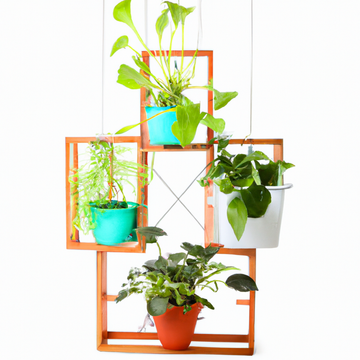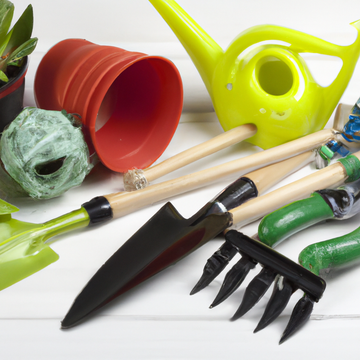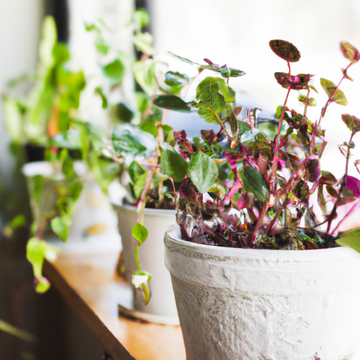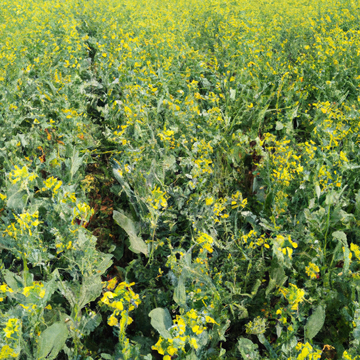Terracotta vs. Ceramic Pots: Which is Better for Your Houseplants?
by Saru Kaushish on May 26, 2023
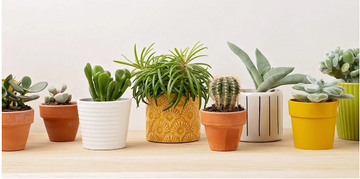
Choosing the right pots for your houseplants is essential for their overall health and growth. The pots you select are crucial in providing the ideal environment for your plants to thrive. When it comes to pot options, two popular choices are terracotta planters and ceramic pots.
Houseplants add beauty and freshness to your living spaces and contribute to a healthier indoor environment. As plant lovers, we understand the importance of creating the best conditions for our green companions to flourish. This starts with selecting the appropriate pots that provide the necessary support and environment for optimal growth.
Understanding Terracotta Pots
Terracotta planters are made from clay and are known for their rustic and natural appearance. These pots have excellent breathability, allowing air to circulate through the soil and roots. This feature helps regulate moisture levels, preventing waterlogging and root rot. Terracotta pots also provide insulation against extreme temperatures, keeping the roots cool during hot summers. Their earthy aesthetic appeal adds a touch of natural beauty to any indoor or outdoor space.
Exploring Ceramic Pots
Ceramic garden pots, on the other hand, are made from a mixture of clay and other materials. They come in various shapes, sizes, and designs, making them highly versatile and suitable for various decor styles. Ceramic pots are known for their durability and long-lasting nature. They are less porous than terracotta pots, which means they retain moisture better, and this can benefit plants that prefer slightly more moisture in their soil.
Factors to Consider
Several factors need to be considered when deciding between terracotta and ceramic pots. First, consider the watering requirements and moisture retention capabilities of your plants. Terracotta pots are ideal for plants that prefer drier soil, as they allow excess moisture to evaporate. With their higher moisture retention, ceramic pots are better suited for plants that require more consistent moisture.
Insulation properties should also be taken into account. If you live in an area with extreme temperatures, terracotta planters can provide insulation against heat, preventing the roots from overheating. On the other hand, ceramic pots can help retain warmth during colder months, which is beneficial for plants that are sensitive to cold.
Additionally, consider the weight and portability of the pots. Terracotta pots tend to be heavier than ceramic pots, making them more challenging to move around. Ceramic pots, being lighter, are easier to handle and rearrange.
Lastly, consider the aesthetic factors and style considerations for your houseplant displays. Terracotta pots have a charming, natural appeal that complements various plant types and decor styles. Ceramic garden pots offer a broader range of designs and finishes, allowing you to match them with specific interior design themes.

Choosing the Right Pot for Your Houseplants
To choose the right pot for your houseplants, consider the specific needs of each plant. Some plants, such as succulents and cacti, thrive in terracotta pots because they prefer well-draining soil and drier conditions. On the other hand, plants that require consistent moisture, like ferns or tropical plants, may benefit from ceramic pots that retain moisture better.
Research the specific requirements of your plants and consult gardening resources to determine which type of pot is best suited for each one. Consider water requirements, humidity preferences, and soil drainage needs.
Maintaining Terracotta and Ceramic Pots
Proper maintenance is crucial for preserving the condition of your terracotta and ceramic garden pots. Here are some essential tips:
Cleaning and Maintenance of Terracotta Pots
- Rinse with warm water and clean with a gentle brush to remove dirt and debris.
- Avoid harsh chemicals that can damage the porous surface.
- Dry thoroughly before reuse to prevent mold or fungi growth.
Cleaning and Maintaining Ceramic Pots
- Rinse with warm water and a clean with gentle brush to remove dirt.
- Avoid harsh chemicals that can damage the surface.
- Dry thoroughly to prevent mold or fungi growth.
Importance of Drainage and Potting Soil
- Ensure pots have drainage holes to prevent waterlogging.
- Use well-draining potting soil appropriate for your plants.
- Monitor soil moisture and adjust watering accordingly.
By following these maintenance practices, you can extend the lifespan of your terracotta and ceramic pots, providing a healthy environment for your houseplants.
Conclusion
Choosing the right pots is crucial for your houseplants' well-being. Terracotta and ceramic pots offer unique benefits to cater to different plant needs. Terracotta planters provide breathability and moisture regulation, ideal for plants preferring drier soil. Ceramic pots offer versatility and durability, retaining moisture for plants requiring consistent moisture levels.
Consider factors like watering requirements, insulation properties, weight, and aesthetics when deciding between terracotta and ceramic garden pots. Proper maintenance, such as gentle cleaning and avoiding extreme temperature changes, ensures pot longevity.
Discover Gold Dust Gardening's diverse collection of terracotta and ceramic pots for your perfect fit. Nurture your plants and create an enchanting display with the ideal pots and care they deserve.

